Warcraft: The Hivemind
Inspired by Telwyn’s post at GamingSF, our Horde group decided to try and acquire the mysterious Hivemind mount. This is the only five-person mount in the game, and was hidden for a long time before the savants in the Warcraft Secret Finding Discord discovered how to unlock it.
Reading through the Wowhead Guide, it’s incredible it was ever solved - some of the puzzles combine a deep knowledge of game lore, out of game meta info found in patch notes, and a crazy commitment to trial and error. Which makes the name of the mount entirely appropriate - it took a Hivemind to solve, and it takes five people working in a Hivemind to obtain.
Even with the extensive notes, steps, and add-ons, it’s a challenge. But we all agreed it was one of the most entertaining experiences we’d had in the game, and very different to most content.
The first step is to obtain four monocles, of different colours, from various sources in the game. To do that you need to don a usually worthless Talisman of True Treasure Tracking, which reveals various hidden items and NPCs in the world as you continue on the quests.

Spoiler alert
The Blue Monocle is gained by finding lore letters scattered around Azeroth. Most are simple travel quests, but one requires you to visit OG Karazhan which opened the memory floodgates for many in our group. We even had to solve Chess, which proved a challenge due to those same floodgates being pretty rusty.
As we set about collecting the Blue Monocle we realised just how complicated this must have been to solve. For example, the letter that leads to Karazhan has this cryptic message:
Of all of Gai’s cures for Nature, the most liberating is Death.
The secret-finders determined that if you took the words with capital letters (Of, Gai, Nature, Death), an anagram could be made which solves to:
Seat of the Guardian
The most well-known Guardian in WoW is Medivh, the Last Guardian. As such, the third letter is located in Karazhan, by Medivh’s Chambers, located after the Chess Event.
Multiply this by seven letters and the magnitude of solving the full puzzle starts to become clear. Thankfully we just need to follow the guides to collect the first reward.

Thankfully not hidden in The Oculus
Next we thought we’d do an easier one and collect the Red Monocle. How wrong we were.
The monocle is obtained from Sir Finley Mrrgglton. He makes what seems like a simple request for a few undersea goods, which must be obtained from various fish vendors that float around Vashj’ir. As we soon discovered, the trouble is a) the fish are spread far apart; b) they’re swimming so move about; and c) there is an rapidly decreasing time limit on the items once they’re sold to you.
This was by far the most stressful monocle to obtain, as the combination of undersea travel and time pressure meant we lost one player after another as the timers expired, until I was the only one still in play - and only just, having beat a timer by seconds.
This was where the five-person hivemind started to shine though, as we devised an on-the-fly strategy to send the out-of-the-race party members to hover over the vendors so that I just had to look at the map and head toward the relevant character. Even that proved tricky when I called out the wrong co-ords for a vendor, and almost messed up the entire thing on a fish that wouldn’t stop long enough for me to complete the trade. But by some miracle we got it done.

Stop hamming for the camera, Sir Finley
The Green Monocle was a doddle in comparison, merely requiring a visit to Skyreach to type in a simple pattern. So simple I forgot to take a screenshot.
I’d read the Yellow Monocle was the killer, and when first approached it seemed impossible. It’s a gem-solve puzzle, where you need to turn an entire room of gems to a single colour using three different rotational crystals.

Nope
I would never have been able to solve it, and had to use the non-obvious Hivemind HoO Puzzle Helper add-on to work it out (which took me 45 minutes to key in and pray it would work), but several of our party figured out how it worked once we got half way across the room. I was suitably impressed.

Yep!
At this point we had all four monocles, and at least one on four different characters, so could move on.
The next stage took us to Suramar, where we needed to get past a barrier that was blocked by coloured beams that matched the monocle colours.

Those colours are familiar…
To do this, four players need to venture out and find named Withered, whose eyes glowed with a matching colour. This was another example of the complexity of the solution. To work this out, players had decipher codes inscribed on each monocle by using alphabet logic-tricks, which revealed the phrase ‘Wild Withered’. They then needed to pore over the Legion patch-notes to discover four named Withered that were added in patch 8.1, then find them scattered in Suramar.
Four of us ventured out to the Withered, while the fifth stood in front of the beams. We had to all attack and ‘kill’ our target at the same time, which forced them to cast a Draw Energy spell that drained the barrier allowing our fifth player to step through.

Fishy eyes
Once inside, the insanity of the solution went to the next level. He had to click on a lost cat toy that was inside the room, and when he did, he was teleported back out of the room and took a small amount of random damage. That damage total - 8140 for us - then become a five digit code (08140) that we needed to use to pat five named cats in the Court of Stars dungeon. How on earth anyone worked out that link - the damage taken mapping to pats on some kittens - is beyond our ken.

Nice kitties
We dutifully patted our kittens, and were rewarded with a transport to the penultimate stage: the dreaded jumping puzzle.
We had assumed this would be where we failed, as 91 co-ordinated jumps awaited a group not known for our mad mouse & keyboard skills. But we were thrilled to find out the ‘jumps’ were actually just clicks, like jumping on a mount. Hallelujah! So we just needed to follow the sequence laid out in the guide and we were through.
Once again our smarter party members had solved this by half way across, though the step where someone had to leap to their death was surely insoluble except by trial and error.

87 of 91
Which led us to the final challenge, which was a variation on the fox-chicken-farmer river crossing puzzle. It flummoxed us for a while, but our Professor eventually sorted it out and we made it across. I was the poison, whilst our newest recruit was the farmer, which was a happy confluence.

So close
And with that we were done. We entered the room with the Hivemind, which in a nice final touch required all five players to stand in summoning circles to unlock.


Naturally we all then returned to Orgrimmar to flounce around showing off our new mounts.

And best of all, we discovered a secret of our own! Once we all mounted a single Hivemind, our host worked out he could eject us…Special Air Horde!


Thanks to the Secrets Discord for making the solution available to all, and solving it in the first place. And kudos to Blizzard for creating five-person content of such a different flavour.
Consoling: Uncharted, Tomb Raider, and The Last of Us
For the last few weeks I’ve been catching up on some relatively ancient and incomplete console games from the pile: Uncharted 3, Rise of the Tomb Raider, and The Last of Us. The latter two I’d got started in but never finished, while UC3 was a fresh start.
Uncharted 3: Drake’s Deception
Uncharted 3 continues the tradition started in the first two games: high-adrenaline on-rails escapist entertainment, and likely the closest we’ll come to an Indiana Jones game.

This chapter takes things slightly deeper by putting you in the sandshoes of the young Nathan Drake, a boy starting out on the path of treasure hunting and adventure seeking. We find out how he meets and bonds with his long-time mentor Victor ‘Sully’ Sullivan via early adventures in relic thievery and (predictably) shooting guns at people.

As with the other games in the series, the amount of people you kill on your journey seeking one of Francis Drake’s supernatural discoveries is ludicrous, but it’s also very cartoony and becomes background noise before too long. It rarely feels like a fight is simply there to extend the game, in contrast to Tomb Raider.

There are a lot of great set pieces, from a ridiculous parachute-free skydive off a crashing aeroplane to a high speed chase on horseback - this game’s version of the great train sequence from Chapter 2. The horse animation is very funny compared to the majesty of RDR - they kind of skate over the sand.

There’s a moment in the game where I thought that the developers had made a brave character choice, before finding it quickly walked back, which was disappointing. But then I remembered what kind of game this is and forgave it: just have fun and don’t worry about the plot or emotional weight. Perhaps the fourth chapter will deliver on that front - it’s titled A Thief’s End which sound somewhat ominous, though it probably means he just chooses the straight and narrow, right?

Rise of the Tomb Raider
Way back in 2013, I purchased an Xbox One at launch solely to be able to play Tomb Raider, having enjoyed the last edition and Rise being a platform exclusive for a while. Of course I then didn’t play it until the exclusive window was over!

It starts well enough, with an epic climb through a brilliantly animated snowstorm where you feel Lara’s cold viscerally. And the early adventuring is just that: adventuring. Finding abandoned tombs, solving fun puzzles, and seeing some amazing sights.

Slowly but surely the game starts to introduce enemies into the picture. And before long that becomes the main thrust of the game: shoot (or hack to pieces with your ice pick) a gazillion bad guys. It becomes pretty tiresome, not helped by the fact that the death animation when you die (which was often for me!) is particularly gruesome. The enemies attack your fallen body with enthusiastic gusto, which is very unpleasant to watch and doesn’t seem to serve any purpose other than shock-value.

I eventually abandoned the game altogether when a battle scene became basically Call of Duty, with Lara and some allies defending a village against wave after wave of gun-toting foes backed up by a military helicopter. That fight exhausted me and seemed so far removed from what I imagine the Tomb Raider series to be about. Lara never questions her killing sprees, nor does the game try to justify them. Which is odd given the semi-serious tone the game takes.
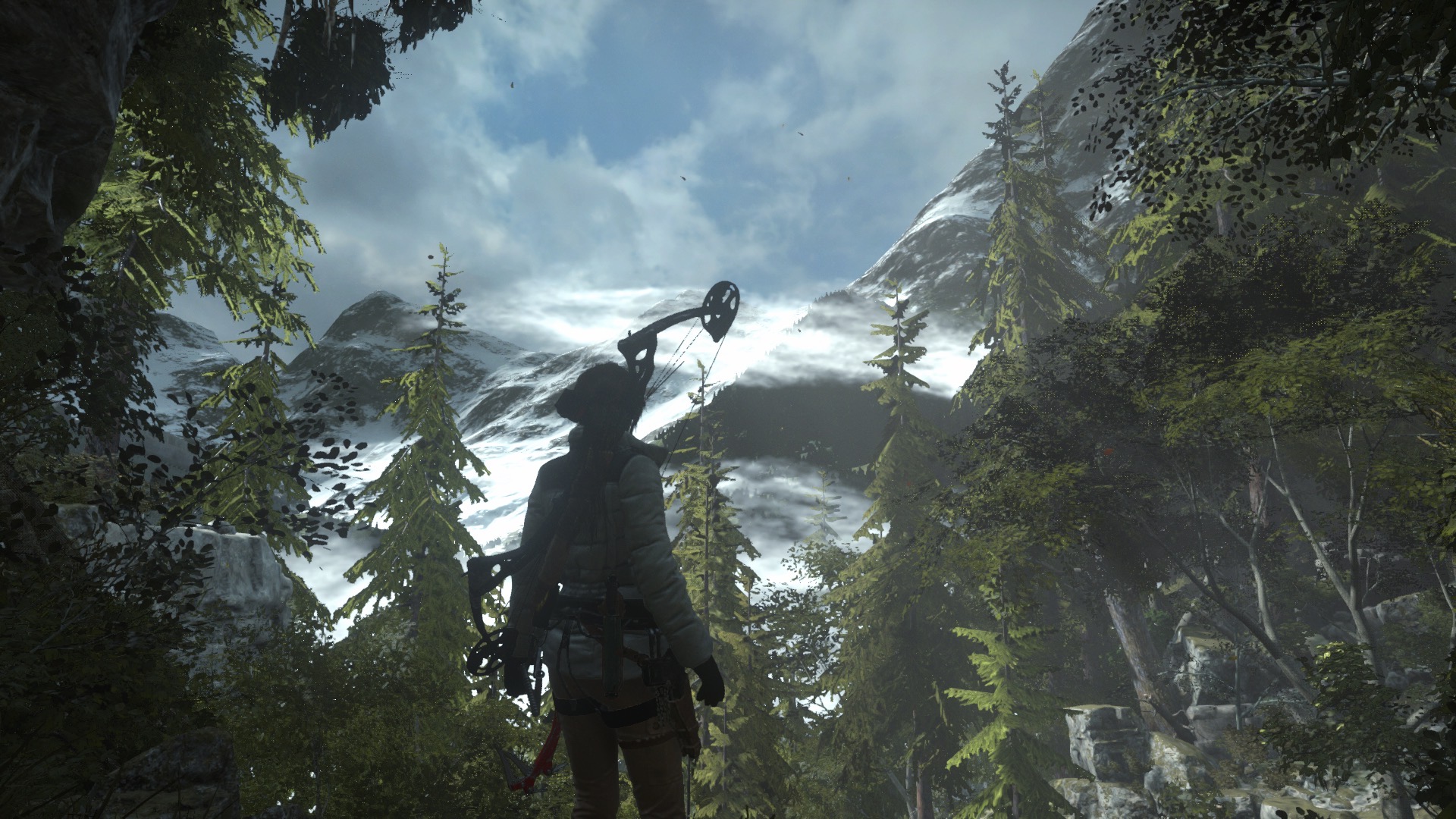
I came back to TR after finishing Uncharted, to try and finish it off (looking at the screenshots it was almost 2 years after my first failed attempt!). This time I knew what to expect, and having just played UC made the whole shooter side of the game seem more normal. The gun battles were still annoyingly frequent, but I upgraded enough skills to be able to sneak through most areas, and silently dispatch enemies if not. Unlocking new abilities also made the environments more fun to traverse, swinging huge distances and launching into mid-air to attach to an icy wall with a lunging pick.

TR is far more serious than UC but if you can settle into the rhythm of it there’s fun to be had. There are some bad and obvious artificial time-extenders (traversing from one side of the map and back, or rescuing a companion that disappeared and returned for no logical reason), and the story is nonsensical, but it’s slightly less on rails and the environments can be lovely to explore. I don’t think I’d play the next one though (Shadow of the Tomb Raider), which from reviews sounds like it’s even more violent and ‘fighty’.
It feels like TR needs yet another reboot, to rediscover the joy of exploration and movement instead of relying on the crutch of combat.

The Last of Us
Talking about violence.
Very early on The Last of Us introduces you to the mechanics of killing (the main skill in the game), as the game teaches you how to sneak up on and throttle some ‘evil’ humans. The strangle and choke animation is long and drawn out, and made me feel bad about the whole event. Maybe that was the idea? But then the game proceeds to demand you kill pretty much everything that moves, human, zombie, or otherwise. With many, many drawn out throttling sequences if you play stealthily as I tried to.
I found myself despising playing this game for quite a while. I’m not a fan of survival horror, and would never normally play this kind of game. But TLoU has had so many stellar reviews, particularly based on the story. So I knuckled down and tried it.

Like TR, I stopped playing multiple times and for long stretches, largely due to being overwhelmed by the horror and graphic deaths I kept experiencing. Watching your character have his jaw ripped from his face, or his face ripped off, or any number of other horrendous deaths is not terribly entertaining. And I was genuinely scared of the zombies once they got close - I abandoned the controller many times with fear and loathing. The sounds the various zombie species make is super unsettling too - very well designed to make you uncomfortable pretty much constantly.
I found the game very hard, and was dying often to begin with, despite setting it to easy mode and having all the possible helpers on. I’m not sure why it was so difficult, some kind of mental block to the setting and viciousness. Lead character Joel is a very hardened soul, with only slivers of compassion occasionally peeking through. So too Ellie, his young ward, who is very old for her age, due to the brutality of the world in which they live. I found it hard to imagine wanting to survive in that world when it was so relentlessly depressing and without hope, which also made it hard to put myself in Joel’s shoes.
I also couldn’t help imagining the plight of the zombies, contemplating what it must be like to be a human consciousness trapped inside those mutated shells, and hating it. I was pleased that the game asked that question (are there people inside these creatures), albeit briefly and quickly dismissed. I’m not sure what canon zombie lore says about this, but just the thought that it might be possible was disturbing enough.

Along with the zombie hordes, you also have to deal with a lot of of unpleasant humanity. Some of the human villains verge on the absurd (let’s make them cannibals and paedophiles and religious nutters) and lacking believable motivation, which makes their deaths seem excusable at the cost of plausibility. Even then it felt slightly wrong to be so trigger happy with the few remaining humans - surely they weren’t all beyond redemption.
All of which makes it sound like this is a bad game - but it’s not. As everyone has said, the story is very strong and the atmosphere and world are brilliant. It’s not exactly open world, but the zones are so thoroughly imagined and varied that it almost feels like it is. I was constantly surprised at how much small detail was put into every room, sewer, and building. The character animation - particularly facial - is beautiful too. You feel like you know precisely what Joel and Ellie are going through just from their (often exhausted) expressions.

The tone is deadly, deathly serious, with very little room for relief. Which makes the rare glimpses of hope or beauty all the more powerful and compelling. One moment in particular toward the conclusion is one of the great reveals in gaming - I won’t spoil it here other than to say that it is almost prophetic in the way it echoes the cautious emergence of wildlife during the Covid-19 event.
And the story is emotionally effective and often surprises. There are clunks and a few fake delays (I’m obviously not a fan of time wasters, which is funny given Warcraft is basically a series of time wasters!) but the slow development of the bond between Joel and Ellie is extremely well told. It’s basically a movie, in that you don’t get any choice in what’s happening, but there’s a reason movies are still a great storytelling medium.
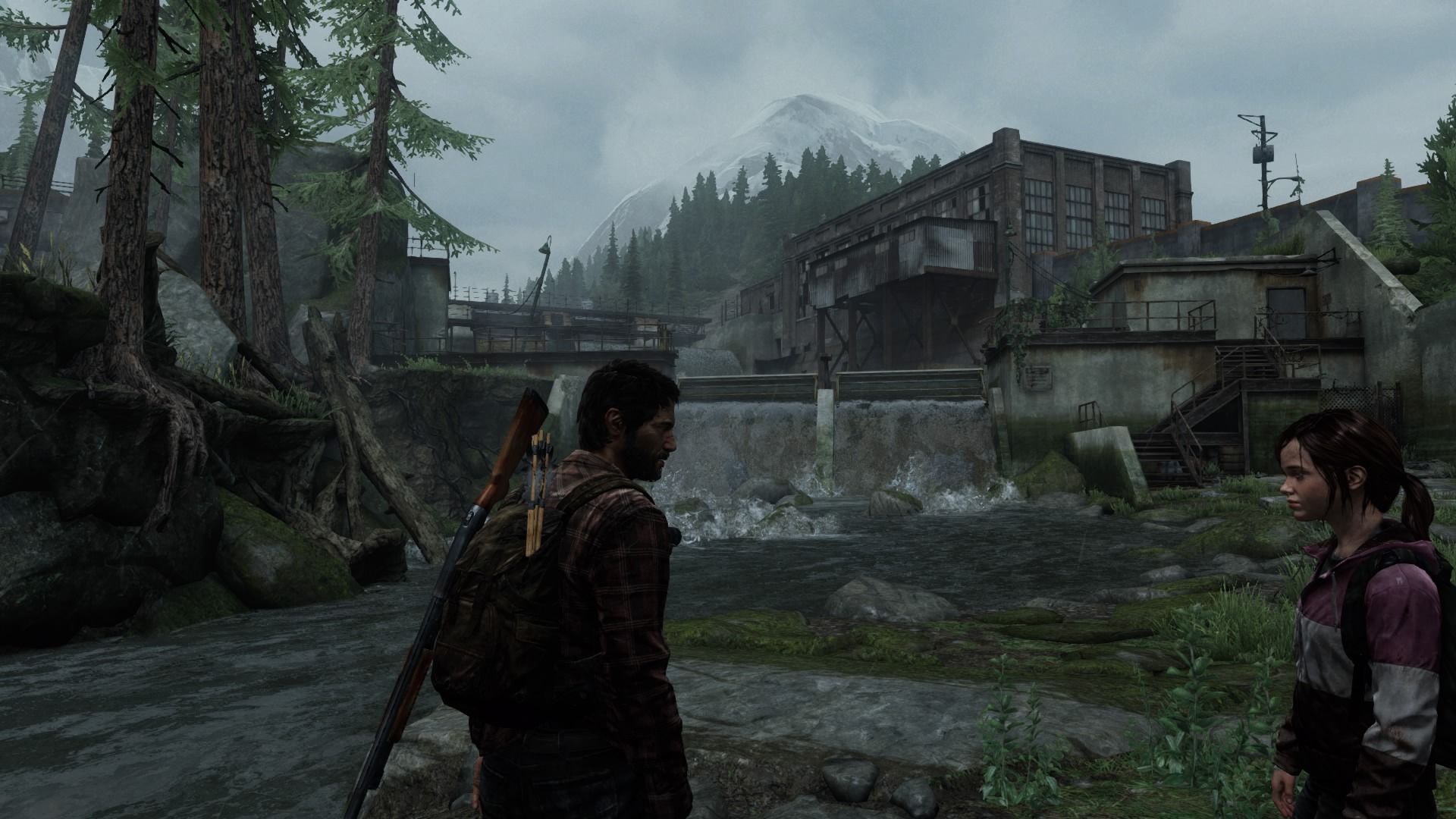
The conclusion of this game is pretty much perfect, and even though there is more story that could be told I’m pretty sure I’ll avoid the sequel. As with TR, reports that the new game ups the ante on the violence and relentless killing makes me think it’s not for me. I’m begrudgingly glad I played this original though.
During the play-throughs I found the emerging theme of these three games for me was how they depicted violence. Each one upped-the-ante, from the arcadey Uncharted, to the serious-face but fantastical Tomb Raider, to the ultra-violent ultra-realistic The Last of Us.
I found it harder and harder to keep up with the sheer volume of murder required. I think this was particularly true of UC and TR, where the heroes don’t ever stop and wonder if maybe 1000 deaths is too high a price for a piece of old treasure. In TLoU it’s slightly more acceptable - you’re killing monstrosities with no redeeming features - but because the game is so glum and real it becomes a psychological slog to keep your head above the claustrophobic horror. And you still have to kill plenty of humans, who are just as set on surviving as you are.
TLoU is perhaps showing the player just how horrible it is, rather than just shoving it into games ostensibly about adventure and discovery. Which doesn’t make it any more pleasant to play, but it does at least provide some context.
The debate about the place of violence in games will likely never end, and it was an interesting to experience different implementations of it in a sequence like this. Despite actively disliking playing TLoU for the first half, it was probably the most honest about the violence. The other two not so much, with TR in particular being guilty of misjudging the line between serious and silly.
I’m tempted to try Destiny 2 again next - getting back to the mindless and repetitive style of grind-gaming in a gorgeous sci-fi universe. Albeit with heavily fetished guns. There’s no escaping it!
Warcraft: Catching Up
Our Alliance crew finally finished off the BC dungeons recently. The general consensus was that they are fair-to-middling, a few good ones (The Hellfire Citadel sequence, Magister’s Terrace), a few bad (the entire Tempest Keep run), and a bunch in the middle.
Most suffered from having not a lot of story thread, certainly when compared to what is to come in WotLK. Even the Caverns of Times dungeons, which I remember enjoying at the time, seemed a bit nothing - not helped by our characters not having been ‘in’ the BC story for some time.


Magister’s Terrace was a good capstone, with plenty of tricky pulls, a Sunwell Plateau raid teaser mid-way, and much hilarity with Kael’thas Sunstrider’s gravity games. He even dropped the awesome Phoenix Hatchling for everyone who didn’t have one. Blizzard have either made it a 100% drop, or we were crazy lucky - I ran this dungeon many-a-time to get the Hatchling to drop back in the day.
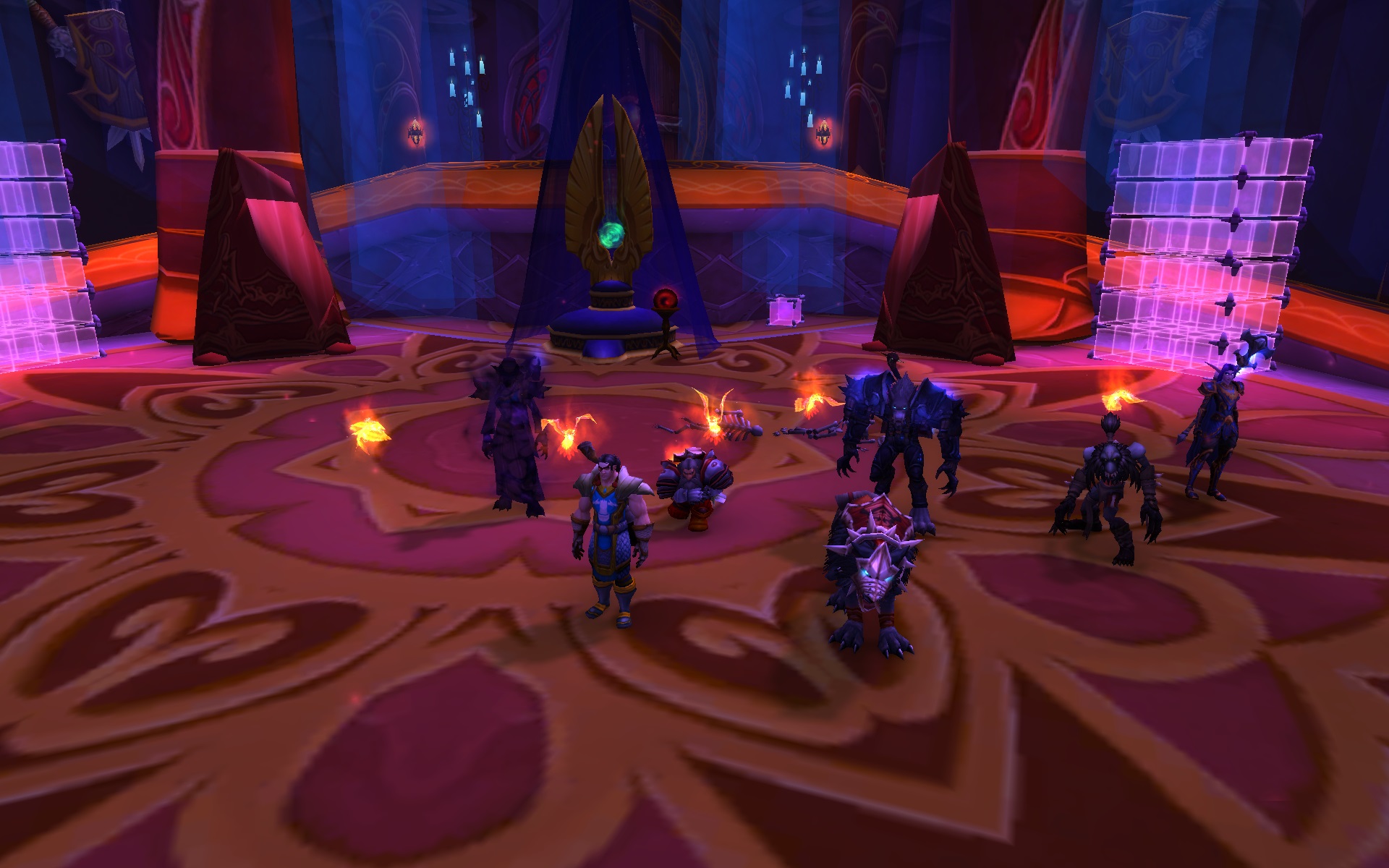
Everyone’s a winner
Like the rest of the alt-fans, I took advantage of the 100% Winds of Wisdom experience buff to level a new character. I’d rolled up several Highmountain Tauren with the aim of earning their heritage armour, and the buff finally got me to commit. I chose a Hunter to be in easy and quick mode, and went to work.
The levelling was fun - I plopped on heirlooms and just queued for dungeons. Because of the buff, the queues popped pretty instantly all the way until Legion where things slowed down for some reason. That was fine as I just swapped to getting my Artefact weapon and doing the Highmountain quests. That was enough to get me to level 110.
I was taken by surprise by getting the Heritage of the Highmountain feat at 110 - I had been expecting it at 120. And as soon as I got it I instantly stopped playing the character. Funny how motivation can disappear when a goal is reached, especially when there is no driver to start a new one. I should also have read up on the armour - turns out it’s only available for Highmountain characters to transmog. Whoops.
It took almost exactly 36 hours to get there, though I think I could have been more efficient (especially in the last 10 or so) and made it in close to 24 hours flat. This sounds in stark contrast to what’s coming in Shadowlands, where a player in the Alpha levelled from 10-50 (the equivalent of 10-110 currently) in under four hours!
Knowing that kind of speed is coming makes the idea of starting a new alt now seem a little crazy. I would like to get a Dark Iron Dwarf, and even started a Night Elf Demon Hunter for the purpose, but I’ve struggled to continue past the (long) starter sequence. I might just have to wait for my sole Alliance character (see above) to get the Dark Iron one day - though I think I read Shadowlands gets rid of the rep requirements for Allied Races so maybe it will be a freebie. Which will probably mean I won’t be interested after all - being given stuff just isn’t the same as earning it.
We put the Alliance crew on hold in order to spend some time finally seeing the BfA dungeons on our Horde characters.
We’ve cleared the Normals and have just started in on the couple of Heroic-only instances. Our Warlock is super-geared compared to the rest of us, so we cheesed every boss mechanic due to his enormous DPS - and that’s with his blueberry out instead of his imp. Rolf-stomping bosses is fun, but we’re all looking forward to having to work for our loot come Shadowlands.



Ravenloft revisited
The first heroic, Atal’Dazar, was slightly more testing - including a wipe due to way too much poison - and probably the best looking dungeon we’d seen in BfA (with the high-gothic Waycrest Manor a close second, particularly with our current DnD campaign being Curse of Strahd!). Not being a Gnome fan I’m not really looking forward to the two Mechagon wings, but they should at least be more of a challenge, being late game additions.

After finishing the dungeons we’ll check out the raids via LFR, and then maybe back to the Alliance run through WotLK. It’s nice to have a small group committed to seeing all the content - we can listen to cut-scenes and admire the dungeon designs which is a relaxing change of pace compared to regular levelling and gearing runs.
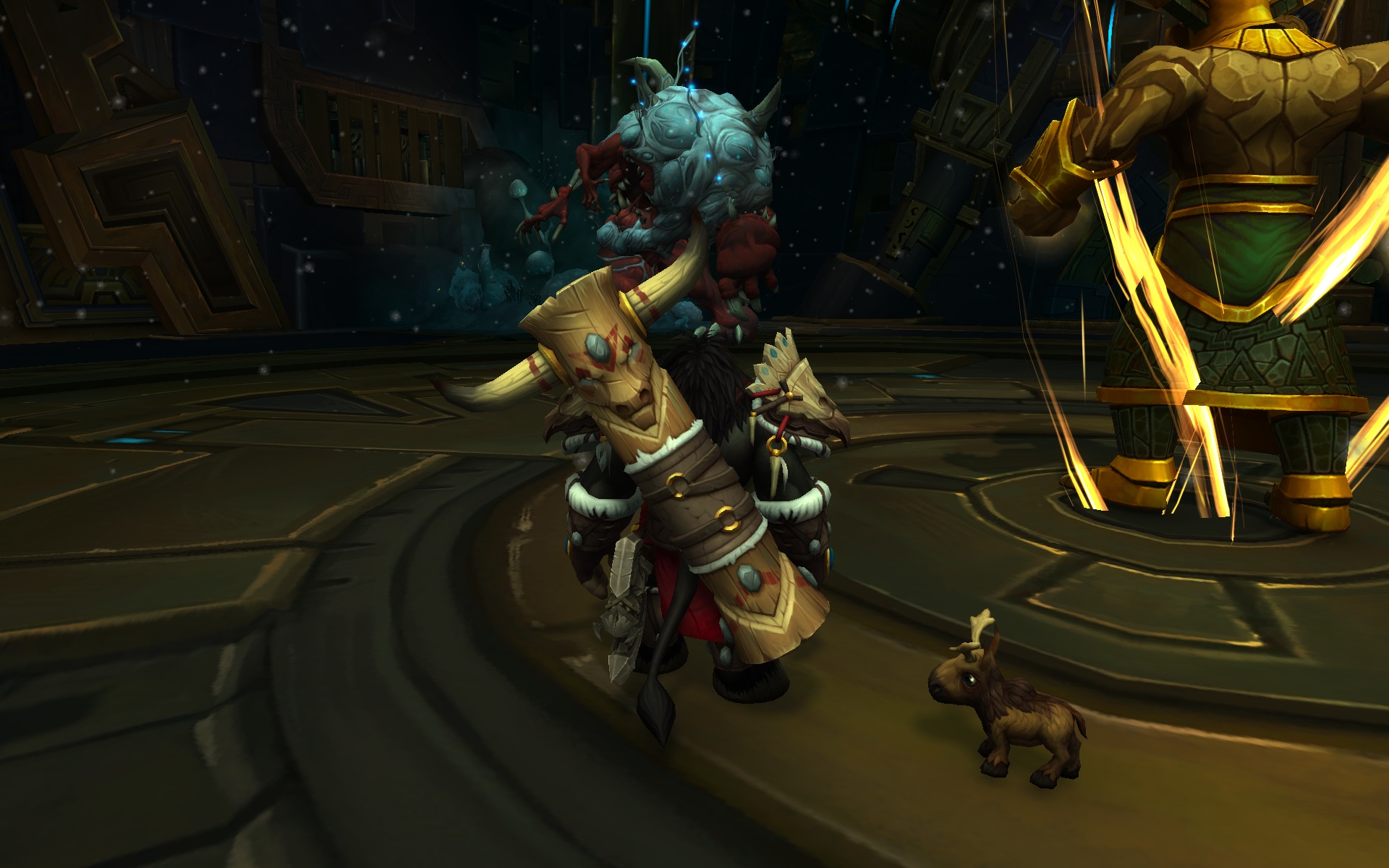

Of course we all dream of somehow doing ‘proper’ raiding in Shadowlands, but also realise it’s very unlikely. Maybe we’ll magically find another small one-night-a-week Oceanic guild to join forces with - stranger things have happened.
World of Shadowcraft
While WoW hasn’t been top of my gaming time for a while, I do want to get through the final BfA raid — Ny’alotha, the Waking City — now it’s available on LFR. The other thing I wanted to do was refresh my UI, for no good reason other than it’s fun to tinker sometimes. Also I stumbled on an ElvUI mod by Lostpet that looked nice so that was a good excuse to try something new.

Once I had it installed (slightly complex but overall pretty easy), I needed to test it somehow — where better than LFR!
I ran the first wing with some friends and died a lot, but slowly started to understand the fights with each death. One of the appeals of raiding is that slow learning curve until triumph, and even in LFR it feels good to contribute. One strange thing happened to one of my co-raiders on the Wrathion fight (the first fight of the first wing). After we zoned in, he said he couldn’t see anything — just the floor and the shadows of the other players. He couldn’t even see his own character. This was quite amusing as we tried to talk him through it, which worked ok until the first flame explosion where he not unexpectedly died. After Wrathion went down, everything returned to normal.
After the reset, I ran the first wing again, solo this time. And entertainingly the same thing happened to me: nothing but the floor and a bunch of shadows.

A Shadowlands preview
I decided I’d try and stay alive by following the shadow pack around the floor, and luckily there was another Tauren Hunter in the group. The big model and easy-to-see bow action meant I could just stand next to them and move when they did. It was very funny and silly, but somehow worked! I managed to survive the entire fight by following my Tauren shadow friend around.
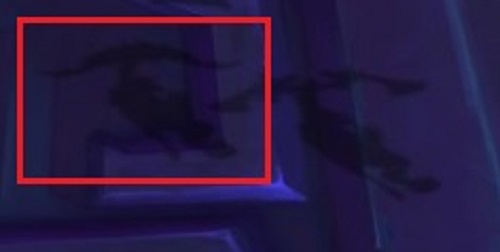
BFF
Even more ridiculously I also managed to finish up about 8th on the DPS charts — which is kind of a humblebrag, but it was LFR and is more an indication of just how nerfed LFR really is. If you can not die and come 8th on the first boss of the final raid of an expansion when you can’t see anything other than shadows, then you know LFR really is a mere…shadow…of actual raiding.

Makes perfect sense
I still love it though, as it gives those not able to raid in a regular group the opportunity to see the end game content, and the wrap up of the storylines. And it was nice to get a peek at the Shadowlands alpha, even if unintentionally.
Warcraft Classic: Muscle memory
Following on from my Alliance woes in ‘retail’ Warcraft, I was interested to find a similar (but different) problem in Classic. In Classic my original characters were all Horde, one Undead Rogue and a cluster of Tauren. The Rogue is still parked in Brill, but the Tauren all finished Mulgore and moved on to Crossroads and the Barrens.
I had no trouble levelling a Hunter and Warrior, knowing Mulgore intimately even in this original incarnation. My retail muscle memory served me well despite the small variations in quests and locations compared to the post-Cataclysm zone: Plainstriders -> Cougars -> Quillboar -> Palemane -> Swoops -> Windfury -> Cougars -> Wolves -> Venture Co -> Thunder Bluff.
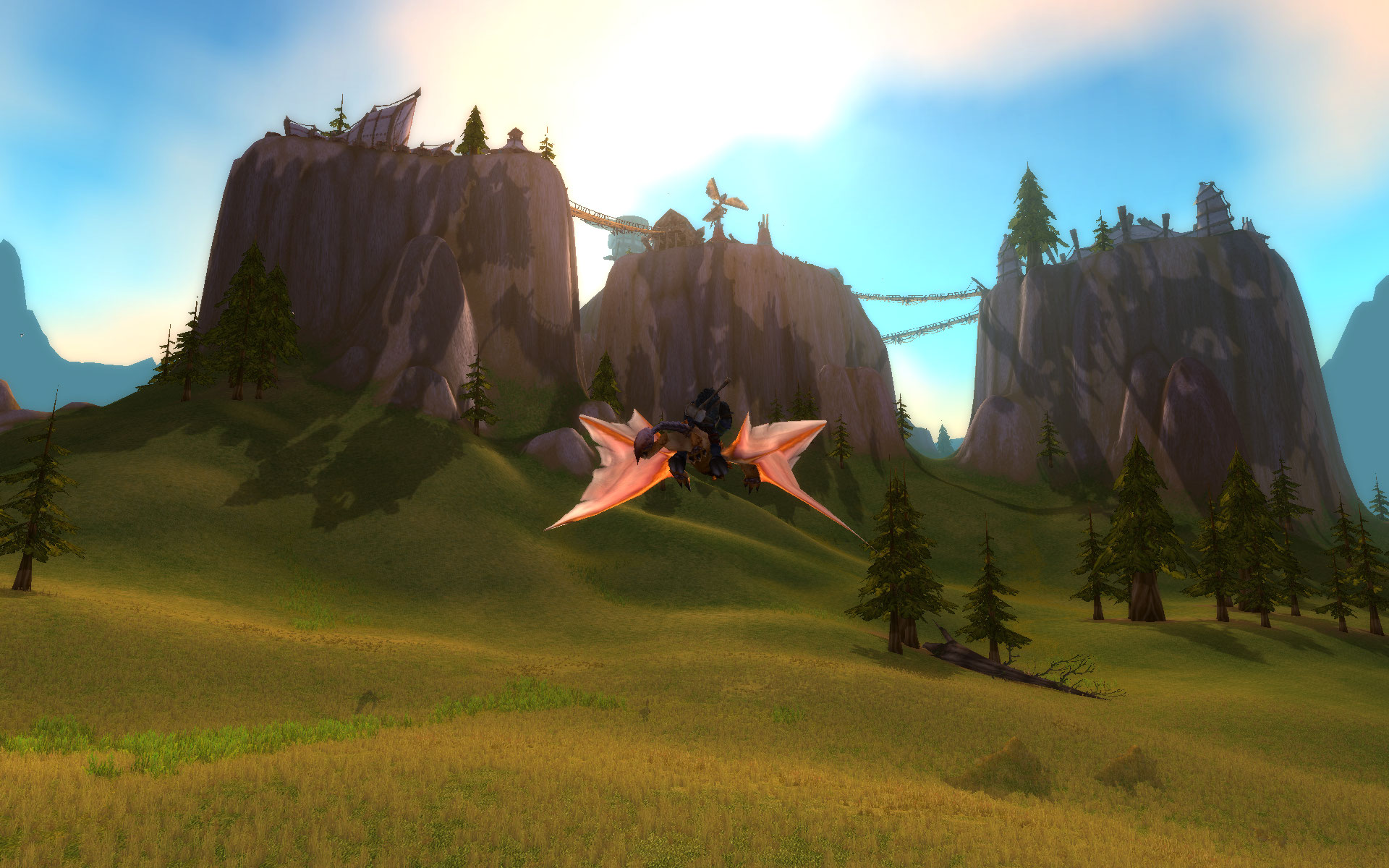
More care was required, but it was the same peaceful journey through rolling Mulgore plains. As a consequence it didn’t take too long to have multiple teen-level characters. I vacillated between two PVP servers and a PVE, which meant ending up with about 5 level 15ish Tauren. Clearly I like the low level levelling best.
Meanwhile my few friends that were interested in Classic dropped out pretty quickly. Only one has stuck it through, being determined to experience Molten Core having missed when playing during the original Warcraft launch fifteen years ago. And he’s made it all the way, getting to 60 and joining MC raids just this week.
I realised a while back that he was my only hope for playing with someone I know, but there was one problem: he’s Alliance. So I gritted my teeth and rolled up a Dwarven Hunter and a Human Rogue, and set about the levelling journey. And it was so … much … slower. Not being familiar with how the zones work, where the mobs are, what to be careful about, and how to navigate gigantic places like Stormwind and Ironforge, made a huge difference.

You look familiar
I struggled to complete some of the early Human quests - killing Defias in a pumpkin patch was almost too much for my Rogue before a higher level player happened to run past and pull all the mobs. And while I was more comfortable with Dun Morogh, I still found it a trial to find quests and not die.
I can’t believe that the Alliance zones are actually harder than the Horde variations, it’s much more likely that simple familiarity makes all the difference. Even though you’re basically doing the exact same thing - a cave of fast-spawning Wendigo vs a cave of fast-spawning Venture Co - without the ingrained history it’s all that much harder. And in Classic, a small amount of hard adds up to a large amount of time.
So, like retail, I think my Alliance plans may have to be abandoned. If I struggled to get to level 10, I hate to think what the journey to 60 would be like. And given that’s a journey I’m only likely to make once, Horde seems to make more sense - in both my head and my heart. As usual!